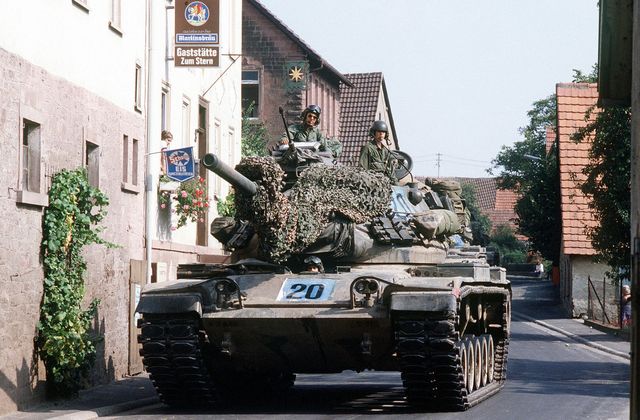Gen. George S. Patton once opined that "a good solution applied with vigor now is better than a perfect solution applied ten minutes later." He would appreciate what's happening with his namesake tank.
For three decades, the Raytheon M60 (informally called the Patton) was America's primary main battle tank. Though the tank was replaced in the early 1990s by the M1A1 Abrams, thousands are still operational abroad. They're all candidates for an upgrade that Raytheon says can make them competitive on the battlefield, and at one-third of the cost of a modern main battle tank like a Russian-built T-90S, German-built Leopard 2A7, or America's own M1A2 SEP(v)3 Abrams. It's am appealing idea for M60 users like Israel, Egypt, Jordan, Saudi Arabia, Turkey, and Oman.
"You have hardware that's of 1960s-1970s pedigree. The supply chain for some of the original equipment is gone," says Rimas Guzulaitis, senior director for platform sustainment and modernization at Raytheon "But you still have countries operating them who need to modernize, eliminate inefficiencies, add accuracy and lethality. They need to keep the M60 relevant."
The M60A3 Service Life Extension Program (SLEP) would hot-rod the Patton via kits supplied by Raytheon and its partners. The new V-12 diesel engine is rebuilt with stronger internals, increased fuel and airflow capacity, better cooling and more compression, and coupled to a strengthened transmission. The changes bump its output from 750 to 950 horsepower.
The Patton's turret can be converted from hydraulic to electric power. Hydraulics are hard to maintain and the hydraulic lines running through the M60's hull are downright dangerous. The kit replaces them with digitally-controlled electric wiring and actuators, making the turret quieter and lighter while allowing it to rotate faster. In place of the original 105mm M68 rifled gun, the M60 SLEP slots in a 120mm M256 smooth bore cannon.
"It's directly out of the M1A1," Guzulaitis says of the gun. "It's substantially more accurate, definitely more lethal, it's lighter and it allows you to use a wider range of NATO-partner ammunition." The gun's range is "substantially greater than an off-the-shelf M60 cannon," too, thanks to a not only the gun itself but also the new digital fire control and sight systems that come with the SLEP. The new configuration has sighting and fire control linked via Ethernet integrated with a laser day sight and night thermal sight, all connected to the electronic turret drive.
Making the Patton lighter and faster raises the possibility of adding additional armor, though none is offered as part of the SLEP. Nevertheless, Guzulaitis asserts that increased speed, firepower, digital control, and maneuverability are significant self-protection improvements.
"A legacy M60 tank requires you to stop to shoot to achieve a high level of accuracy," he says. "The new system allows you to shoot on the move, which equals increased survivability. If you have to stop to shoot, you're opening yourself up to getting hit."
The fire control portion of the upgrade has been fielded on 80-plus tanks in Jordan for over a decade. Raytheon recently integrated it with the improved drivetrain, turret, and gun in live-fire testing at the Army's Aberdeen Proving Ground in Maryland. The company has yet to ship any SLEP kits, but there are three customers in various stages of Foreign Military Sales approval process right now. That means we'll likely see hot-rodded Pattons in the Middle East soon.














